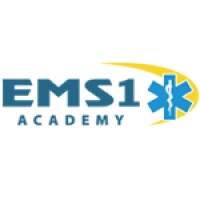Sponsored by EMS1 Academy
By EMS1 BrandFocus Staff
With budget cuts and staffing issues plaguing many EMS agencies, finding the bandwidth to meet, manage and document required or mandated training can be an uphill battle. As a response, EMS providers have begun to turn to online learning as an ideal training solution.
Training online offers inherent advantages. It’s cost-effective, it’s always available and it’s easy to track and manage. Online learning can also reduce risk.
Here are a few ways your online learning provider should help your agency meet its annual training requirements and decrease liability.
1. ONLINE TRAINING CATERS TO STATE REQUIREMENTS
Online learning is customizable. So whether your agency needs to adhere to CAPCE (Commission on Accreditation for Prehospital Continuing Education) guidelines for EMS recertification or internal requirements, you can ensure your program is compliant.
Your online learning provider should work with you to help you meet requirements in your state or region, regardless of how quickly mandates change. For example, our EMS1 Academy Platform is an organizationally accredited online education provider by CAPCE and continually adds and updates new courses to be in line with the latest industry standards.
Additionally, many modern online training solutions can deliver content on smartphones, tablets, or desktop computers, making them available anywhere, at any time. Tracking time, even in short bursts during the day— like 15-minute videos with tests—can help your personnel reach annual certification requirements.
For many agencies, EMS providers must complete annual continuing education to maintain their certification. It can be difficult to accommodate coverage when you have an understaffed agency. Thanks to the accessibility of online learning, agencies can increase the number of training hours while reducing the number of hours a responder is absent.
“One of the primary reasons we chose to train using EMS1 Academy was the platform’s ease of use. Our personnel are able to easily complete course training and our administrator can simply track compliance and pull reports to view course completion records. Compared to our previous training solution, EMS1 Academy is much more streamlined and the course content is just what we need to provide proper training for our agency. We would definitely recommend this training solution to anyone looking for a valuable training resource for their agency.”
– Door County Emergency Services, WI
2. ONLINE COURSES CAN HELP FILL TRAINING GAPS AND DECREASE LIABILITY
It’s likely your agency needs to meet a number of specialized training requirements or mandates. You may currently be on the hook for identifying—and paying for—a range of instructors to conduct multiple, in-person training sessions. Online learning can greatly ease if not eliminate this burden.
An online learning provider with a comprehensive course library can efficiently deliver training for a large number of specialized topics that might prove costly to provide in a classroom setting.
In addition, by offering increased training opportunities, you are reducing liability costs at your department, too—which can take a huge bite out of your department’s budget. For example, according to the National Highway Traffic Safety Administration (NHTSA), over a 20 year period, from 1992 to 2011, there have been a reported 6,500 accidents involving ambulances each year.
High-liability categories, which are all offered on the EMS1 Academy platform, include:
- Airway Management
- Cardiovascular Emergencies
- Emergency Vehicle Operations
- Patient Assessment
- Trauma
Having access to a broad library of online training courses is a viable solution to help improve the safety of your EMS’s and paramedics, productivity and performance and decrease risk while staying within budget.
3. REPORTING AND TRACKING PROGRESS MINIMIZES RISK
Maintaining accurate training records is as important as actually taking the required courses. Without proof of course completion and department compliance, one audit or legal issue can completely disrupt your agency.
One of the benefits of online learning is the streamlined electronic record of your agency’s training activity. A learning management system (LMS) enables EMS agencies to eliminate any makeshift or paper processes currently in use. This improved workflow benefits everyone, from personnel to the administration and leadership divisions.
For instance, if an EMT is unable to complete training in one sitting, courses can be bookmarked and completed at a later time. Training administrators and leaders can easily monitor the progress and the completion of assigned tasks. Then, anyone within the agency can easily pull a report for compliance in the event of an audit. Digitally organizing and tracking your agency’s compliance can also reduce liability in the case of a lawsuit.
4. AN ONLINE TRAINING SOLUTION LESSENS BUDGET AND TIME COMMITMENTS
Often, EMS agencies budgets don’t align with the resources and time needed for first responders to meet annual training requirements. This becomes a challenge for the Training Coordinator as an EMS professional cannot be on call and scheduled for in-person training at the same time. So will your agency plan training during work hours? Or will you pay for overtime?
What if some of those training sessions are only available in particular regions in your state and your personnel have to travel? Additionally, managing work schedules when emergency medical personnel are away at training adds another layer of complexity.
An online training platform can be the solution to these problems. The flexibility opens the doors to allowing emergency responders to complete training in between runs, which cuts overtime costs and keeps your agency compliant. Further, it provides administrators with a tangible return on investment from both a time and monetary perspective.
Today’s EMS agencies are faced with complex training requirements and need cost-effective ways to ensure personnel is compliant with state standards. An LMS that offers high-quality courses and tracking can meet those needs.












